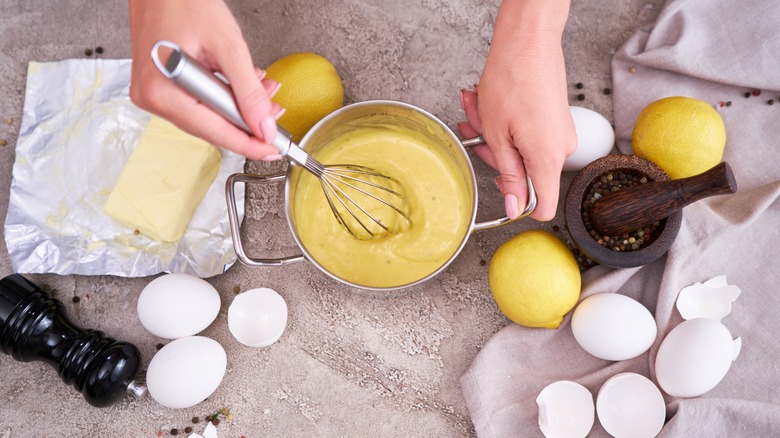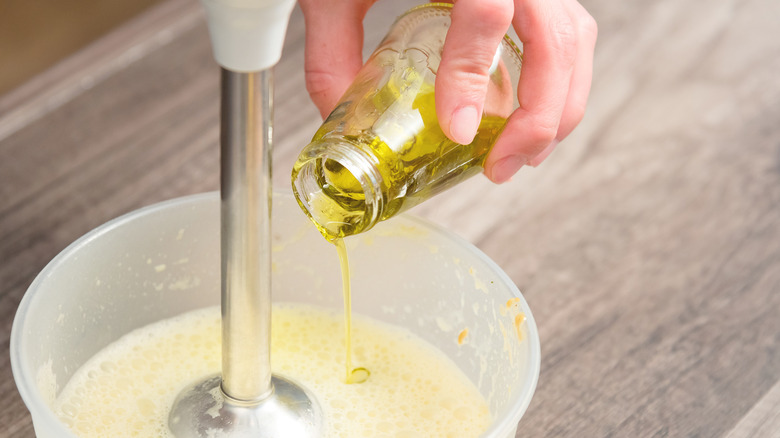What Does The Term 'Broken Sauce' Mean?
You may not know what broken sauce means, but you've probably done it before. Maybe you cranked up the heat on some tomato sauce, only to end up with a greasy glop instead of smooth, hearty comfort. Maybe you got ambitious for a weekend breakfast and tried to whip up some creamy hollandaise for your eggs benedict, but ended up eating cereal because your sauce came topped with a pool of butter. At the time, you likely just referred to it as "messing up" the sauce, but breaking is a specific kind of mistake that can only occur with particular kinds of sauces.
Knowing what a broken sauce is starts with knowing a little of the science behind making certain sauces. Many popular sauces and condiments are known as emulsions, which MasterClass notes is a combination of two liquid ingredients that don't naturally combine. One of the most common examples of an emulsion is mayonnaise, which combines oil- and water-based ingredients. And often, a third ingredient known as an emulsifier is used to help stabilize what is an otherwise unnatural mixture — ever seen peanut butter split? A successful emulsion is when a single liquid, made from separate parts, achieves a smooth and creamy consistency — so how can one avoid breaking it?
A broken sauce happens when emulsion ingredients separate
Not every sauce is an emulsion, but many of them are, and they break when the mixture separates back into its constituent parts. As Gobble notes, this usually takes the form of one watery part and another oily one, a sad sight that anyone who has tried to make homemade mayonnaise is probably familiar with. Emulsions are delicate things — you're using chemistry and force to combine ingredients that don't want to be combined, so messing up just one element of the mixing process can result in a broken sauce.
According to Kitchn, temperature and blending speed are the two biggest causes of a broken sauce. The emulsion needs time to work, so you must slowly introduce the fat. Dump it all in at once, and your emulsifier won't be able to form connections fast enough. Hot or cool temperatures that alter the nature of ingredients can also break the bonds that keep a sauce together. Sudden high heat can prematurely cook eggs, as in the case of hollandaise, or conversely, break down starches, which weakens their power to bind the sauce. Cold temperatures can cause fats to solidify, rupturing the links established when it was liquid.
If this all sounds like a lot, that's because it is. Broken sauces are some of the most frustrating parts of cooking. But by knowing what you're dealing with and why, you can take the steps to avoid them.

